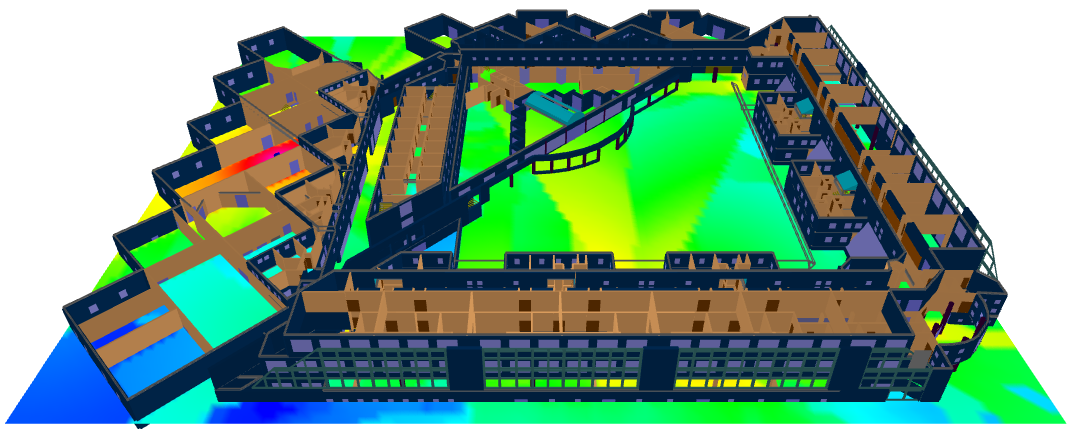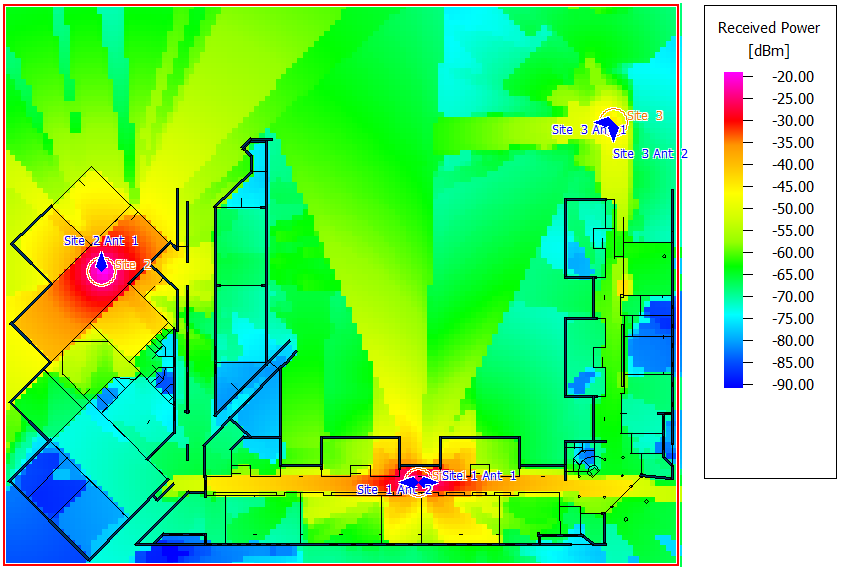Indoor Communication, 2.5G
The network planning of an indoor scenario is investigated. The geometry is a large convention center.

Sites and Antennas
There are three antenna sites in different locations in the convention center. The antennas used are vertically polarized antennas with imported antenna patterns.
Air Interface
Computational Method
Results
Propagation results show, at every location, the power, and field strength received from each transmitting antenna individually.

The type of network simulation used is a static simulation (homogeneous traffic per cell). The network simulation calculated minimum transmission power, SNIR(max), reception probability (including fast fading) for both downlink and uplink.
Site 1 and site 3 have two antennas each, and site 2 has only one antenna. The orientations of the antennas are selected to achieve the best indoor propagation. Indeed, high data rates and high receive probability are achieved almost everywhere